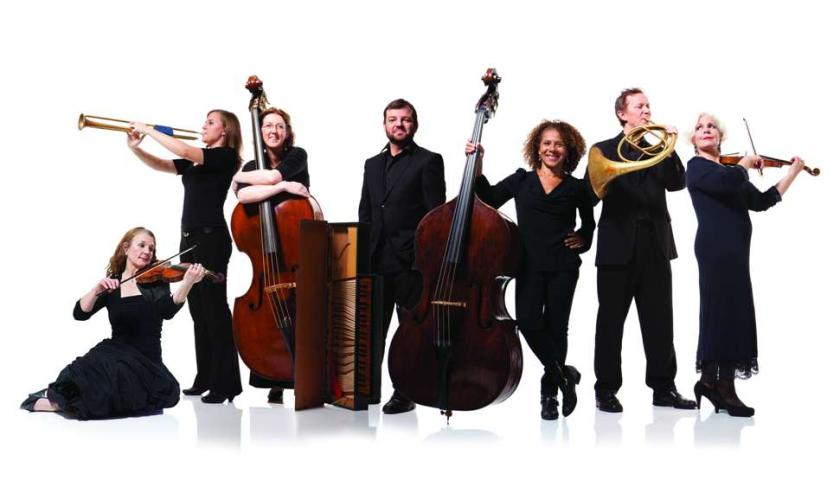It’s a sadness to all lovers of the French horn that Mozart’s four horn concertos, the product of his longest friendship, make their appearance all too rarely in the concert hall. Though the building blocks of the repertoire, perhaps their apparent frivolity counts against them. But last night the Orchestra of the Age of Enlightenment and its principal horn Roger Montgomery brought out of mothballs the best-known concerto, K495, and planted it in the middle of a programme celebrating Mozart the entertainer.
First up was Symphony no 36, K 425, dashed off on the way back from Salzburg in 1782, where Mozart had taken his young bride to introduce her to his father. Stopping off in the court of Linz, he arrived unprepared and so produced a symphony on the run in a mere four days. If the domestic introductions between his father and wife had been a strain, it doesn’t show in the Linz, whose opening salvo elegantly straddles the line between majesty and intimacy. Perhaps it records the conversation Mozart wishes had taken place. A slimline OAE, conductorlessly led by Margaret Faultless, delivered the entire symphony on its feet, apart from the four cellos, which had the effect of making the audience sit up and really listen, above all to the opening Adagio. As ever with this orchestra, this account was all about decluttering and clarity, intelligence and civility.
One suspects it was Mozart’s intention to give everyone a bit of jolt
There was perhaps a little too much civility in the Serenade No 9, K320, better known as the Posthorn Serenade, which they performed after the interval. This would indeed have been played by musicians standing in the street, but the OAE counterintuitively chose to sit down for an eight-movement piece composed to celebrate the end of the academic year at the Benedictine University. One suspects Salzburg’s students might have been fidgeting as the piece’s discursive, slightly cerebral arguments are politely lobbed about. For all the OAE’s energy and passion, especially in the Concertante’s seductive back-and-forth wind chorale, the impression was of high-class rumpty-tumptiness. Things turned suddenly livelier when in the penultimate minuet a piccolo fluttered out a solo, promptly topped by David Blackadder’s blasts on a posthorn from the back of the stalls. One suspects it was Mozart’s intention to give everyone a bit of jolt.
Not such necessity in K495, the Fourth Horn Concerto (though actually Mozart’s second). It goes without saying performing Mozart (or Haydn) on the natural horn is one of classical music’s genuine high-wire acts. Joseph Leutgeb’s virtuosity emboldened Mozart to compose music that technically sailed way beyond the demands of his orchestral horn music. To find the extra notes needed to make a decent tune, Leutgeb had to vary the air flow coming through the bell by manoeuvring his right hand, often at bewildering speed.
Montgomery is a true heir of the hand-stopping tradition, and here created the thrilling impression that he was playing several instruments at once as the notes came out in a fetching variety of shades – trumpety purples, muffled browns, flutey pinks and rich greens. (No wonder the manuscript of K495 is written in four differently coloured inks.) If the Allegro was all about pyrotechnics and dexterity, Montgomery turned the Adagio into a beautiful wordless aria and rounded off with the famous rollicking Rondo which more than hints at the horn’s muddy-booted DNA as an instrument of the outdoors.
He then went and did almost all of it again at the OAE’s Night Shift concert, this time delivering the last two movements as a nonchalant kind of party trick. Indeed the whole programme was essentially festive. As orchestral leader (seated on a piano stool), Faultless did what no conductor ever does and invited each string section to take a bow. When the cat’s away...













Add comment